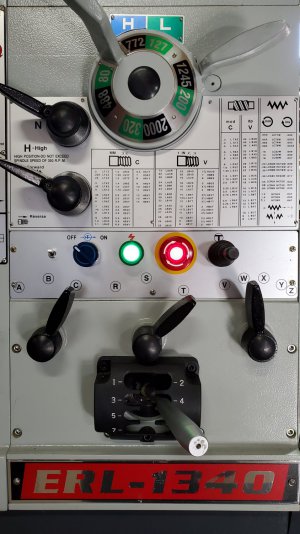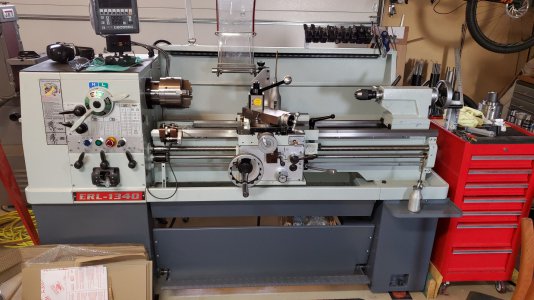All the Sunmaster lathes sold by Kent, Acra, PM/QMT have universal gearboxes with no change gears, you can download the manual for the models at the Acra website. Grizzly Southbend are the same, as well as a number of other distributors. They all basically operate the same, when you get to the next level $$, there are more features like power drives, I have not seen any of these style of lathes with an ELS. All these lathes will outlast us, and are all very capable. If you want to look at them, then make take a trip out to southern CA (LA county where Acra, Kent, Victor and Kensington are all located). Worth a trip if you are spending this kind of money and you need to check out the machinery. As I mentioned, I own the Sunmaster lathe, and also installed the VFD control system an used my friend's Acra 1640, and they are very capable lathe, the Kent would be no different. The fit and finish is top notch, and there is no issues with rigidity.
My lathe is the ERL-1340 model (made by Sunmaster) that I purchased from PM/QMT many years ago, it has the a D1-4 chuck mount which I went with that because I was already heavily invested in chucks and tooling, otherwise I would have gone with the 1640 with a d1-6 chuck mount and a 2.5" spindle bore. Beyond that size, chucks get way too big and heavy, and most of my work envelope is small stock as well as a lot of metric. There are no change gears unless you need to do dp/mod threading, all feeds, metric/inch threading is done with the gearbox levers below, this design has been around for many decades. Victor is also the same, change gear is only for dp/mod, say it on the website. I also wanted to go with a lathe model that had been in production for many years and parts would be available for decades, as opposed to some Asian model that was imported for a short period of time.
Looking at picture in brochures and such, as well as comparing specifications, one often gets lost in the numbers as opposed to the what you need and the function of the machine. The limitation at this level is the operator and not the machine. Also when you start pricing out everything, you need to factor in that some machines come with two chucks, steady rest, follow rest, light, etc. where the Kensington and Victor do not. Cost of tooling will also be significant, and then the addition of a 3 phase converter if needed.

acramachinery.com




